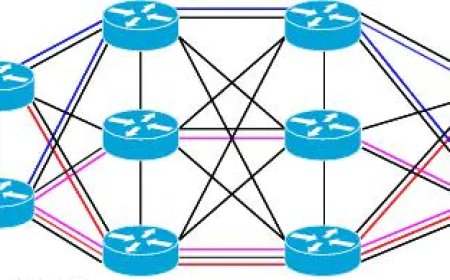PAXOS Explained
Paxos is a consensus algorithm used in distributed computing systems to ensure that all nodes in the system agree on a single value or state. In distributed systems, where multiple nodes work together to accomplish a task, ensuring consensus among all nodes can be challenging due to the possibility of network failures or other types of failures.

What is PAXOS ?
Paxos is a consensus algorithm used in distributed computing systems to ensure that all nodes in the system agree on a single value or state. In distributed systems, where multiple nodes work together to accomplish a task, ensuring consensus among all nodes can be challenging due to the possibility of network failures or other types of failures.
The Paxos algorithm was first proposed by Leslie Lamport in 1989 and is designed to handle failures and network partitions in a distributed system. Paxos uses a series of rounds to reach a consensus on a single value. During each round, nodes propose a value, and other nodes respond with either an agreement or a rejection. If the majority of nodes agree on a value, that value is chosen as the consensus value.
The Paxos algorithm is widely used in distributed systems, such as databases, file systems, and messaging systems, to ensure that all nodes have a consistent view of the system's state. However, Paxos can be complex to implement, and there are other consensus algorithms that have been developed to address some of its limitations, such as Raft and Zab.
Simplified Explanation of PAXOS consensus alghoritm by ChatGPT
Imagine you and your friends want to decide on a game to play, but you all have different ideas. You suggest playing soccer, your friend suggests playing tag, and another friend suggests playing hide and seek. But you can't decide which game to play.
So, you come up with a plan. You all agree to vote on which game to play. But, in order for the vote to count, at least half of the group must agree on a game.
At the first vote, only you and one other friend vote for soccer, while the rest of the group votes for other games. So, you still can't decide which game to play.
But, instead of giving up, you decide to try again. You suggest that everyone take a moment to think of a different game to play, and then you vote again. This time, more people vote for soccer, and you finally have enough votes to play soccer.
This is similar to how the Paxos algorithm works. In a distributed system, there are different nodes that need to agree on a single value. Paxos ensures that all nodes agree on the same value by having them communicate with each other through a series of rounds. During each round, nodes propose values and other nodes respond with either an agreement or a rejection. If the majority of nodes agree on a value, that value is chosen as the consensus value.
So, just like how you and your friends worked together to reach a consensus on which game to play, Paxos helps nodes in a distributed system work together to agree on a value.
Additional info about Paxos
Even if there are failures or network partitions, Paxos algorithm guarantees safety, which means that it ensures that all nodes in a distributed system agree on a single value. Nodes communicate with each other through a series of rounds in order to agree on a value. During each round, a node proposes a value and other nodes respond with either an agreement or a rejection. If the majority of nodes agree on a value, that value is chosen as the consensus value.
Paxos guarantees safety because it ensures that only one value is chosen as the consensus value, even if multiple nodes propose different values. It does this by using a quorum of nodes to decide on the consensus value and by ensuring that all nodes agree on the same value before moving to the next round.
What's Your Reaction?

























